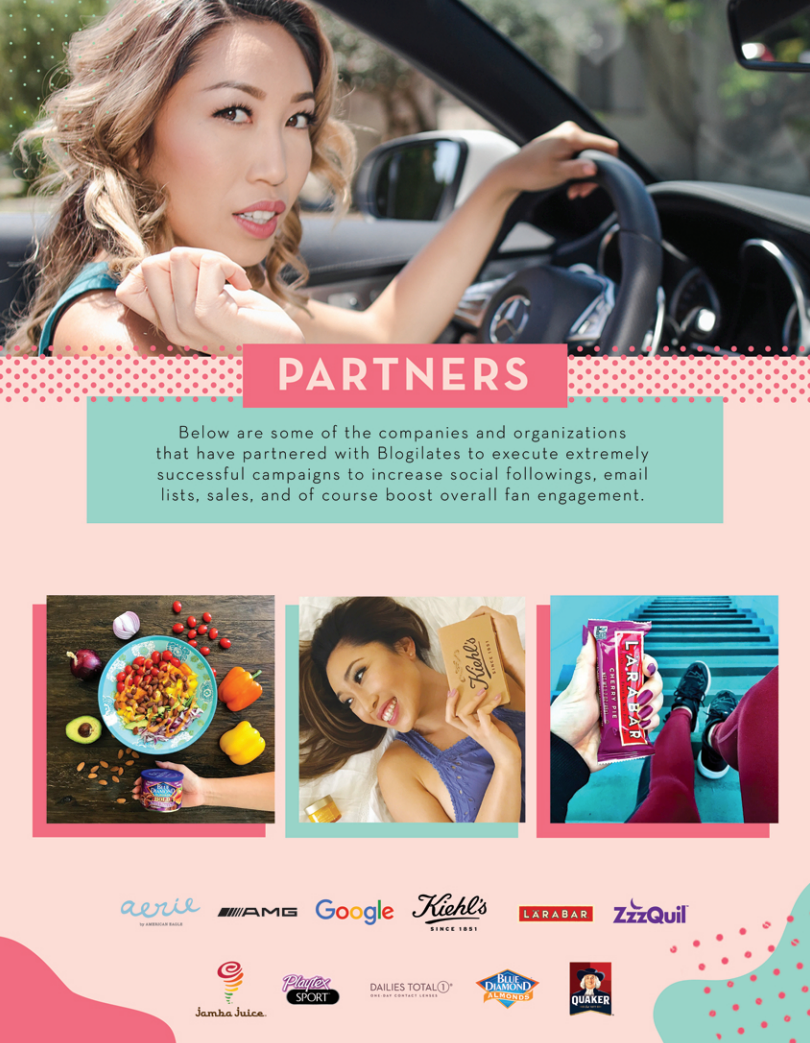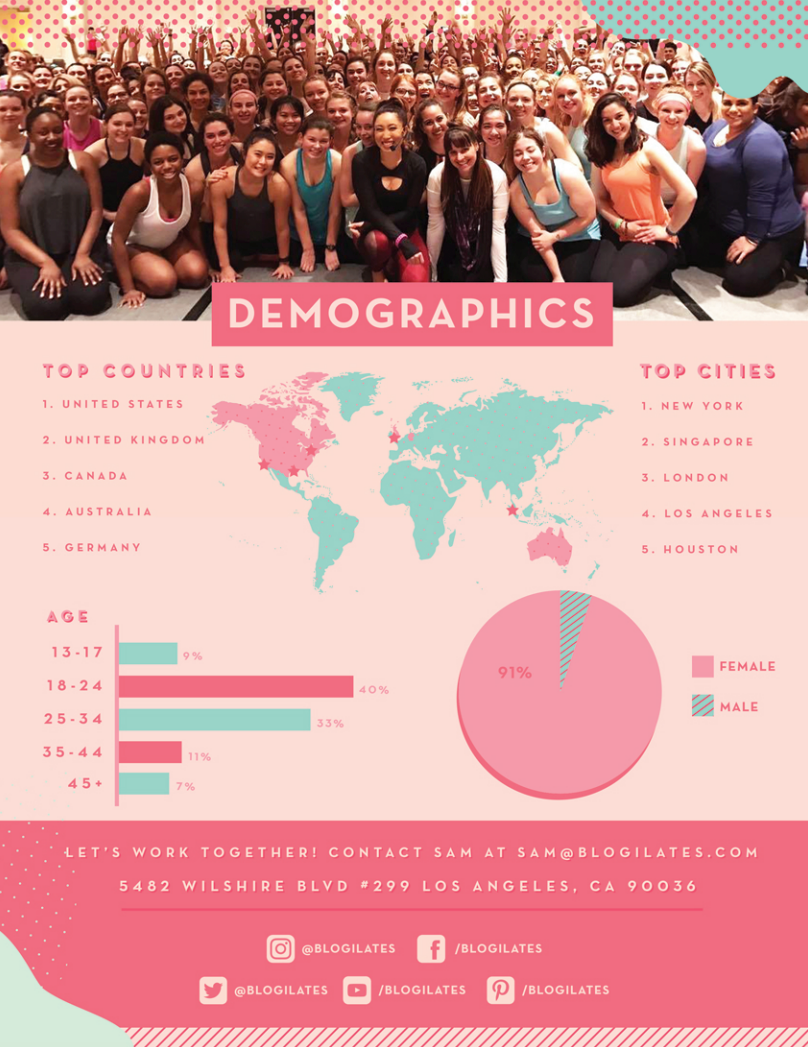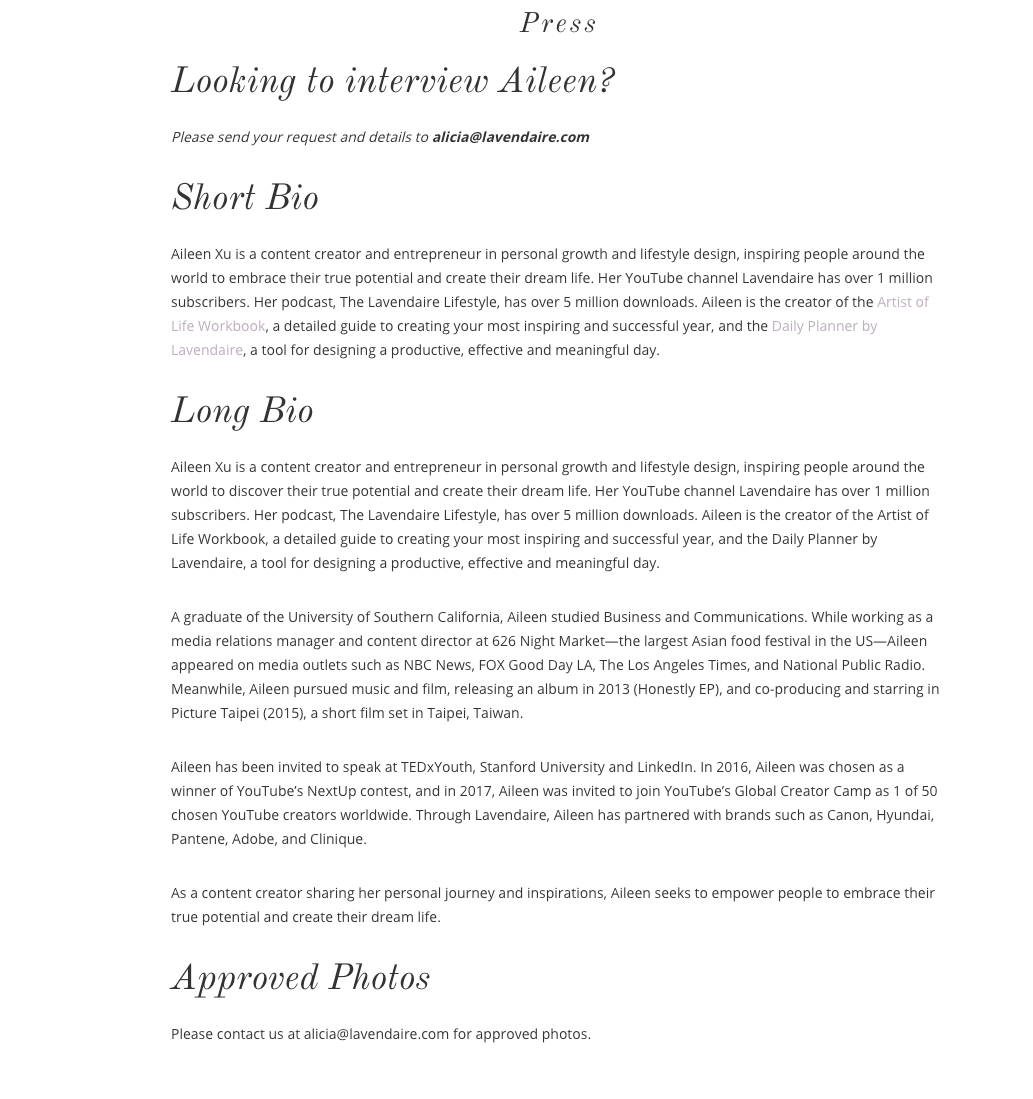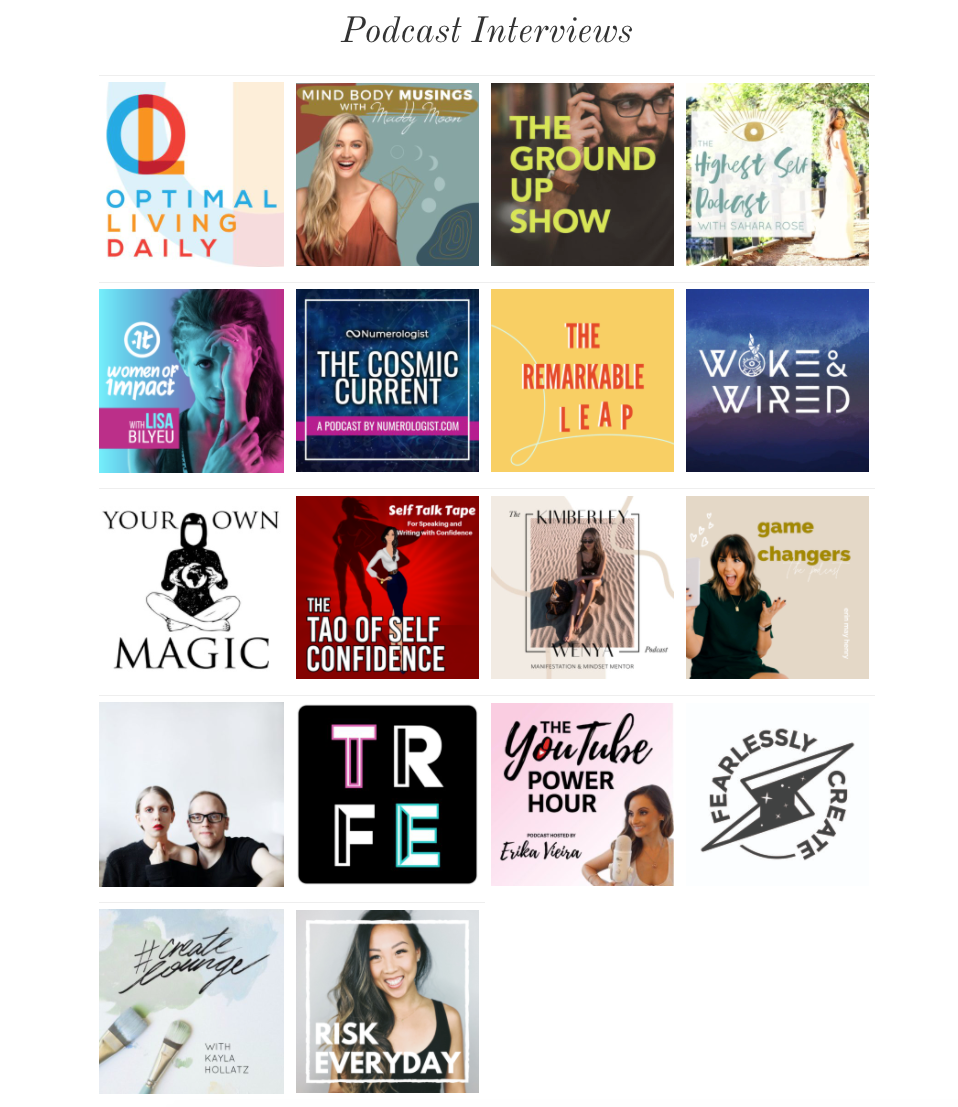What's the Difference Between a Media Kit, Press Kit, and Speaker 1-sheet?
Q: What's the difference between a media kit, press kit, and speaker 1-sheet?
A: You might get different answers for the question above from other agencies or publicists, but when you work with us, here’s how we differentiate between the three.
Simply put, a media kit shows off how successful your brand is in terms of engagement for potential advertisers or partners while your press kit serves as a 1-stop shop for all of the resources a media maker might need while booking you for an interview. A speaker 1-sheet, on the other hand, should help an event organizer decide if you’re the right fit for a speaking slot based on your topics, experience, and credentials.
Below we’ve broken down each of these and provided a few examples.
Media Kits
If you’re looking to position your personal or lifestyle brand as an influencer, you’ve likely come across the term “media kit.”
The goal is to help an advertising partner decide whether or not you’re an aligned fit for their brand as they consider sponsoring posts on Instagram, your podcast, or other social media platforms. Oftentimes, advertising packages with influencers come with a combination of all three options.
In your media kit, you’ll want to offer:
A bit about your background - This can be as simple as a >100 word professional bio or a shortened version of your story.
Social media numbers - Choose the platforms that you would like to use for advertisement only, so don’t include LinkedIn numbers, for example, if you have no intention of using that for branded partnerships.
Topics - Include a handful of topics that you’re an expert in or would like to partner on. This is an opportunity for you to show how well-researched you are on the brand by customizing specific topics that you think would make great content.
Case studies of past partnerships - One missed opportunity that I see in media kits is a lack of social proof for past partnerships. You don’t need to go into depth here. Simply include who you worked with, a picture of a branded post, and a few engagement numbers. If you’ve never worked with a partner before, you can include other engagement metrics from your social media profiles or testimonials as a placeholder.
Demographics - Describe who your target audience is, where they live, and what their interests are.
Contact information - Include whomever they need to reach out to in order to ask questions or to start working with you.
To start making your own, an easy resource for you to use is Canva. They have beautiful, free templates that you can start tinkering with right away.
Press Kits
A press kit is a 1-stop shop that will give a media maker - a podcast host, producer, journalist, or editor - all of the information they need from you to produce a piece of content.
When we start working with retainer clients, we create a Google Document press kit for each of them. These aren’t fancy because their goal isn’t to attract someone to their brand or message. They’ve already landed the gig.
In the press kit, you’ll want to include:
A short bio
A long bio
Links to your social media profiles
Links to important resources (website, podcast, freebies)
Contact information (phone number, Skype username, mailing address)
Link to approved photo options - We like to use Dropbox here so we can swap out photos whenever we like.
(Optional) 8-10 sample questions
Links to past interviews or features
Speaker 1-Sheets
If you’re looking to expand your thought leadership platform through speaking, you’ll need to create a speaker 1-sheet.
Similar to a media kit, it’s meant to sell someone on your brand or your message with a primary goal of helping a speaking organizer decide if you’re the right fit or not.
In the speaker 1-sheet, you’ll want to include:
A professional speaking bio - This might differ from your usual bio by emphasizing past speaking gigs or experience on the stage.
Your signature talk - Include a short >50 word description and a few bullet points
(Optional) Short description of other potential topics
Testimonials from past speaking engagements - This can be from participants or from speaking organizers. It’s nice to have a blend of both.
Logos and photos of you speaking - Since this is an asset meant to sell you, you’ll want to create visual variety within it. Include logos from past companies, conferences, or associations where you’ve spoken as well as photos of you on the stage if you have them.
Link to a speaker reel - If you have a reel, include a link to it.
Contact information - Include the email address and phone number of yourself, a team member who handles media requests, or your speaking agent.
If you create this in a PDF, you typically don’t want to go beyond 2 pages.
What about including a Press/Media page on your website?
You can absolutely include a press/media/speaking page on your website instead of creating a PDF. Many of the examples above came from websites as well as the one below.
However, be sure that there isn’t too much information on one page, so you may need to create separate pages for each of the goals above.
